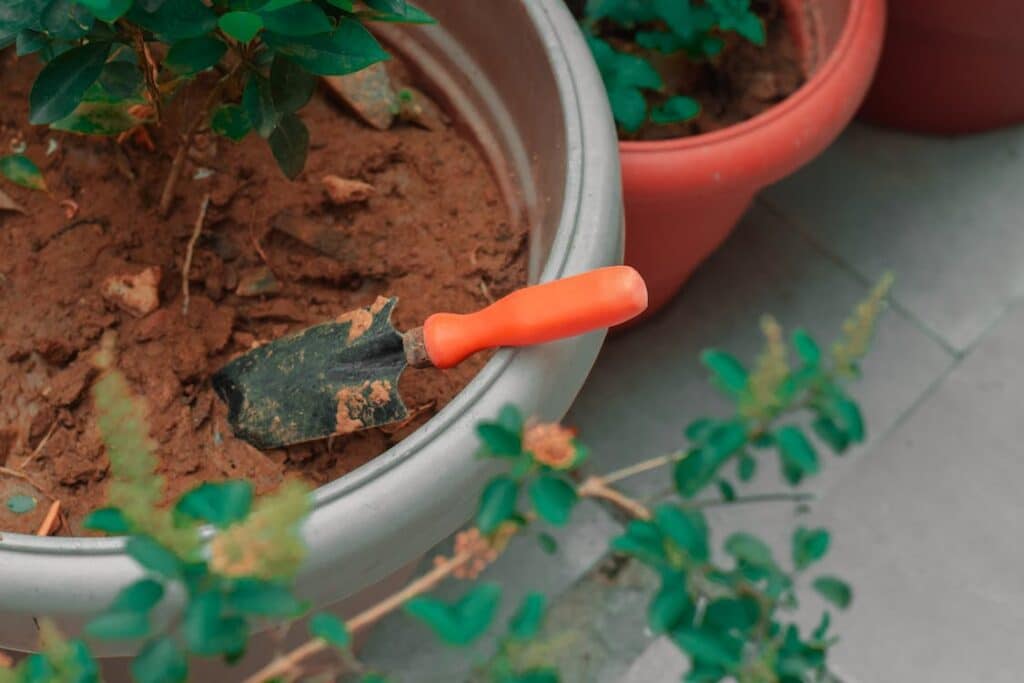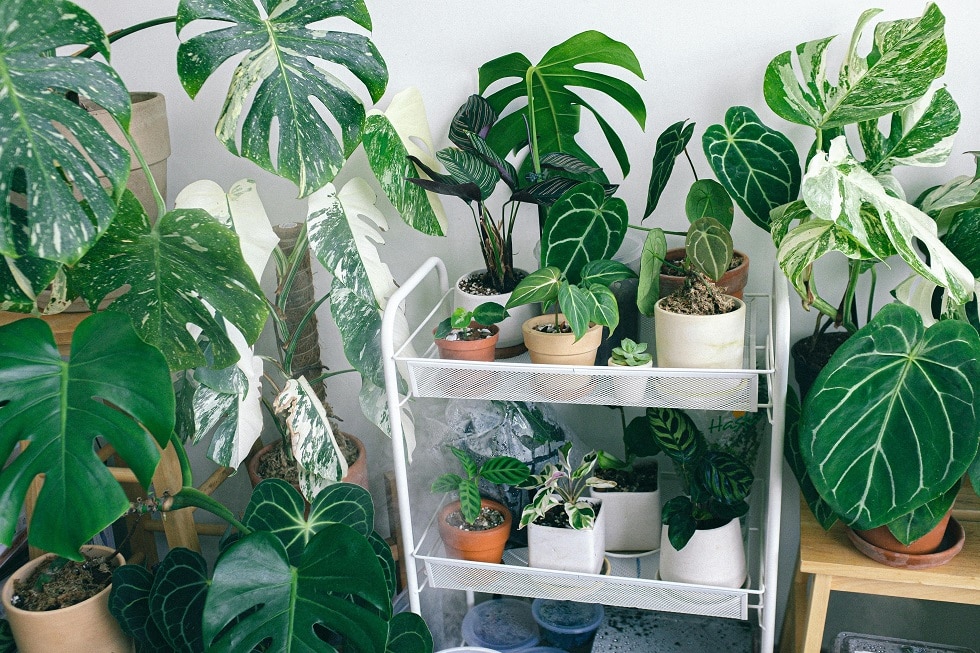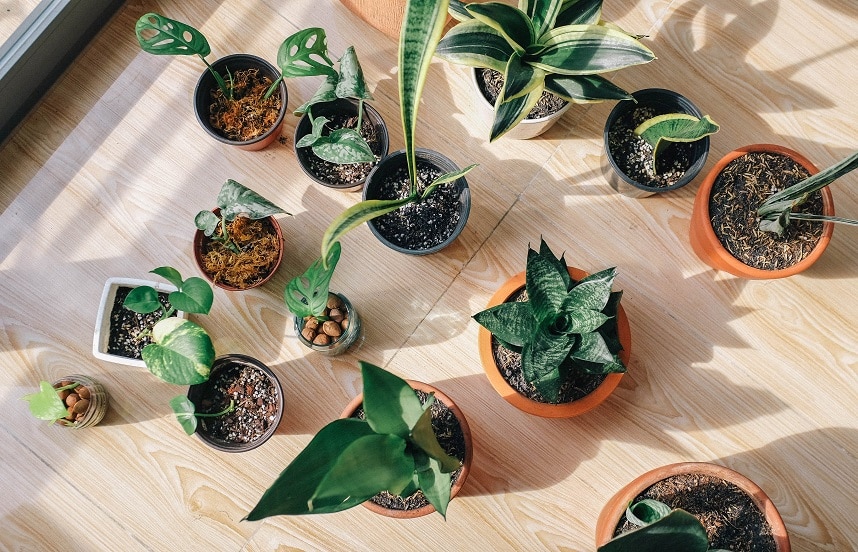Worried about why did my cactus turn black? Unearth the root causes and practical solutions with our comprehensive guide. From overwatering to fungal infections, we delve into the common culprits behind this issue.
Have you ever wondered why your beloved cactus suddenly takes on a mysterious black hue? It’s no secret that cacti can be resilient, but when they start turning black, it’s time to investigate. In this article, we’ll uncover the possible reasons behind this enigmatic transformation and shed some light on how to revive your cactus to its former green glory. So, grab your gardening gloves and let’s get to the bottom of this prickly predicament!

Common Causes of Cacti Turning Black
Overwatering
Overwatering is one of the most common causes of cacti turning black. Cacti are desert plants that have evolved to survive in arid conditions with very little water. When they are direct to excessive moisture, their roots can become waterlogged, leading to rot. Thus, it can cause the cactus to turn black as the rot progresses. It is important to remember that cacti require well-draining soil and water must be sparingly.
Underwatering
On the other hand, underwatering can also cause cacti to turn black. While cacti are drought-tolerant plants, they still need some water to survive. When a cactus is not getting enough water, it dehydrates, leading to discoloration and blackening. So, it is crucial to find the right balance between providing enough water to keep the cactus healthy without overdoing it.
Root Rot
Root rot is another common cause of cacti turning black. However, it occurs when the roots are constantly exposed to excess moisture or are sitting in waterlogged soil. The excess moisture creates an ideal environment for fungal or bacterial growth, leading to the decay of the roots. As the roots deteriorate, the cactus may turn black. To prevent root rot, it is important to ensure proper soil drainage and avoid overwatering.
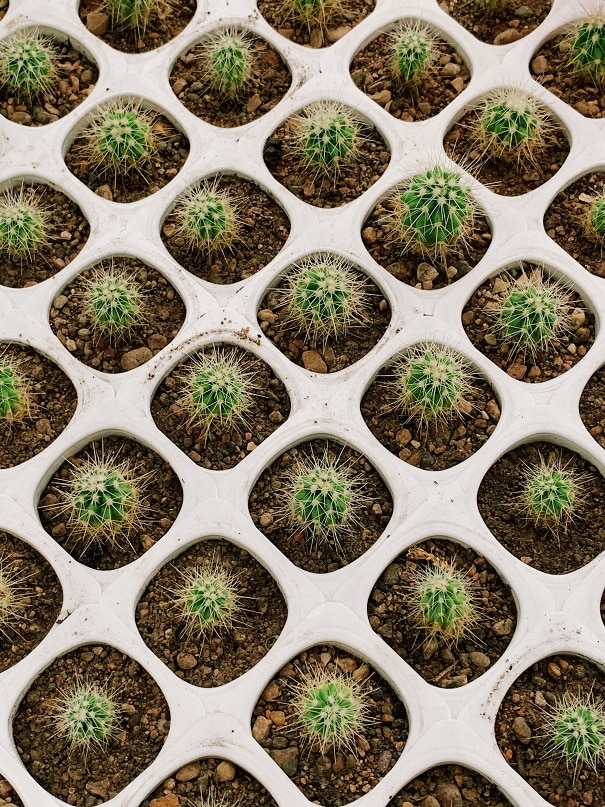
Fungal or Bacterial Infections
Fungal or bacterial infections can also cause cacti to turn black. These infections can enter the plant through wounds or cuts on the surface and spread throughout the cactus, causing tissue damage and discoloration. If you notice any signs of a fungal or bacterial infection, such as mushy or discolored spots, it is important to promptly treat the affected areas with appropriate fungicides or bactericides to prevent further damage.
Sunburn or Overexposure to Light
Cacti require plenty of sunlight to thrive, but too much direct sunlight can cause sunburn and lead to blackening. If a cactus is exposed to intense sunlight for extended periods, its tissues can become damaged, resulting in darkening or blackening. It is important to provide sufficient shade or gradually acclimate the cactus to direct sunlight to prevent sunburn.
Cold Temperature Stress
Cacti are generally adapted to warm climates and cannot tolerate extreme cold temperatures. When exposed to low temperatures, especially below freezing, cacti can experience cold temperature stress, leading to tissue damage and blackening. If you live in a region with cold winters, it is important to protect your cactus by moving it indoors or providing adequate insulation during colder months.
Physical Damage or Injury
Accidental physical damage or injury can also cause cacti to turn black. This can occur if the plant is mishandled or accidentally knocked over, leading to bruising or tissue damage. Even minor damage can make the cactus more susceptible to infection, resulting in blackening. Moreover, it is important to handle cacti with care and ensure they are kept in a safe location to prevent physical damage.
Nutrient Deficiency
A lack of essential nutrients can also contribute to the discoloration and blackening of cacti. Cacti, like all plants, require certain nutrients to grow and remain healthy. When these nutrients are lacking in the soil, the cactus may exhibit signs of nutrient deficiency, such as blackening of the stems or leaves. It is important to provide the cactus with a balanced fertilizer to ensure it has access to all the necessary nutrients.
Pest Infestation
Pest infestation can cause damage to cacti and lead to blackening. Common pests that affect cacti include mealybugs, spider mites, and scale insects. These pests feed on the plant’s tissues, causing discoloration, wilting, and blackening. However, it is essential to regularly inspect your cactus for signs of pest activity and take appropriate measures, such as applying insecticidal soap or using natural predators, to combat these infestations.

Natural Aging Process
Lastly, the natural aging process can cause cacti to turn black. As cacti grow and mature, it is normal for older parts of the plant to die off and turn black. This is a natural part of the cactus’s life cycle and does not necessarily indicate a problem. Furthermore, differentiate between blackening due to aging and blackening caused by other factors to determine if any action needs to be taken.
Identifying the Problem: Why Did My Cactus Turn Black?
Visual Signs of Blackening
When trying to identify the cause of a blackening cactus, it is important to carefully observe the visual signs. Look why did my cactus turn black? It gets black on the stems, pads, or leaves of the cactus. Note the patterns and distribution of the blackening, as this can provide clues about the underlying cause.
Checking Soil Moisture Levels
Checking the soil moisture levels is crucial in determining if overwatering or underwatering is the cause of the blackening. Insert your finger into the soil up to the first knuckle. If the soil feels excessively wet or waterlogged, overwatering may be the issue. On the other hand, if the soil feels completely dry, underwatering could be the culprit.
Inspecting the Roots
Inspecting the roots can help reveal if root rot or any other root-related issues are causing the blackening. Gently remove the cactus from its pot and check the roots for any signs of rotting, such as a foul odor, mushy texture, or dark discoloration. Thus, healthy roots should appear firm and white.
Observing for Fungal or Bacterial Growth
Look for any signs of fungal or bacterial growth on the cactus. This may include white, fuzzy patches, slimy or discolored spots, or areas with a strong and unpleasant odor. However, these growths are indicators of an infection and should be treated promptly to prevent further damage.
Evaluating Sunburn or Overexposure
Consider the cactus’s exposure to sunlight. If the blackening is primarily on the side of the cactus facing the sun, it may be a result of sunburn or overexposure. Compare the condition of the cactus to other plants in the area to determine if excessive sunlight is the cause.
Assessing Temperature Variations
Take into account any temperature variations the cactus has been exposed to. If the blackening coincides with exposure to low temperatures, cold temperature stress may be the cause. Consider whether the cactus has been protected from freezing temperatures and if it has been exposed to sudden temperature changes.
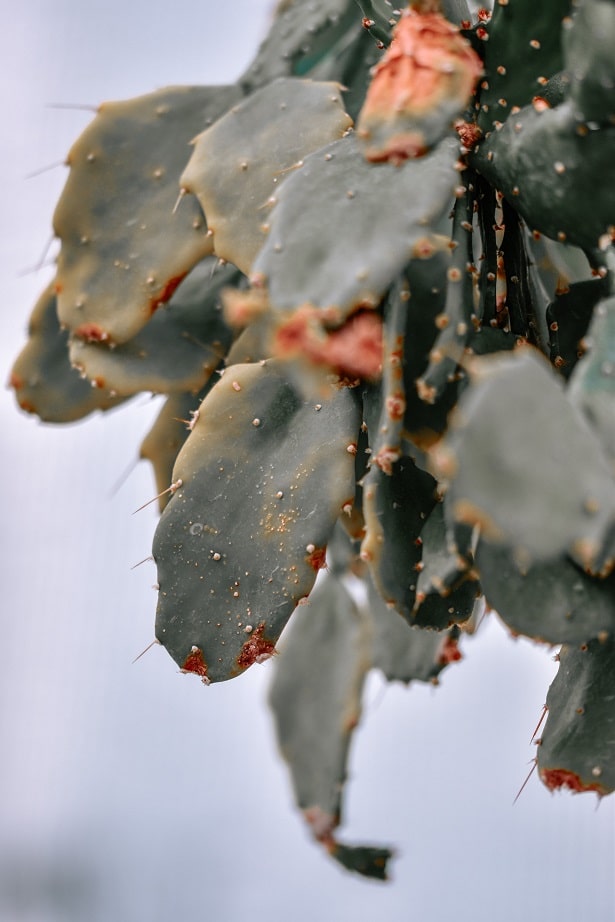
Examining for Physical Damage or Injury
Examine the cactus for any signs of physical damage or injury. Look for bruises, cuts, or any other visible wounds that could have occurred due to mishandling or accidents. Even small injuries can lead to tissue damage and blackening.
Analyzing Nutrient Deficiencies
Consider if the cactus is showing any signs of nutrient deficiencies, such as overall poor growth, yellowing or browning of the leaves, or stunted development. Nutrient deficiencies can contribute to blackening, so assessing the overall health of the cactus is important.
Looking for Signs of Pest Infestation
Look for any signs of pest activity on the cactus, such as small crawling insects, webbing, or sticky residue. Pests can cause damage to the cactus, leading to blackening and other issues. Identifying the presence of pests will help determine the appropriate treatment.
Differentiating from Natural Aging
Lastly, consider the age of the cactus and whether blackening could be a natural part of its aging process. Older parts of the cactus may naturally turn black and die off, while new growth remains healthy and vibrant. Differentiating between natural aging and other causes of blackening is essential in determining the appropriate response.
Prevention and Treatment: Why Did My Cactus Turn Black?
Proper Watering Techniques
To prevent blackening due to overwatering or underwatering, it is important to master proper watering techniques for cacti. Allow the soil to dry out between waterings and ensure the cactus is planted in well-draining soil. Avoid watering on a strict schedule and instead water based on the moisture needs of the cactus.
Balanced Watering Schedule
Establishing a balanced watering schedule is crucial in maintaining the health of the cactus. Watering can be the main reason why did my cactus turn black? It is important to find the right balance between providing enough moisture for the cactus to thrive without overwatering. Adjust the watering frequency based on factors such as temperature, humidity, and the specific needs of the cactus species.
Improving Soil Drainage
Improving the soil drainage is essential to prevent root rot and waterlogged conditions. Use a well-draining soil mix specifically formulated for cacti that allows excess water to flow through easily. Consider adding perlite or pumice to the soil to enhance drainage further.
Applying Fungicides or Bactericides
If a fungal or bacterial infection is suspected, appropriate fungicides or bactericides should be applied to treat the affected areas. Follow the instructions on the product label and ensure thorough coverage of the infected parts. Regularly monitor the cactus for any signs of recurring infections and take prompt action if necessary.
Protecting from Excessive Sunlight
To prevent sunburn and overexposure, provide your cactus with adequate shade or gradually acclimate it to direct sunlight. If intense sunlight is unavoidable, consider using shade cloth or positioning the cactus in a spot where it receives filtered light. Providing protection from excessive sunlight will help prevent tissue damage and blackening.
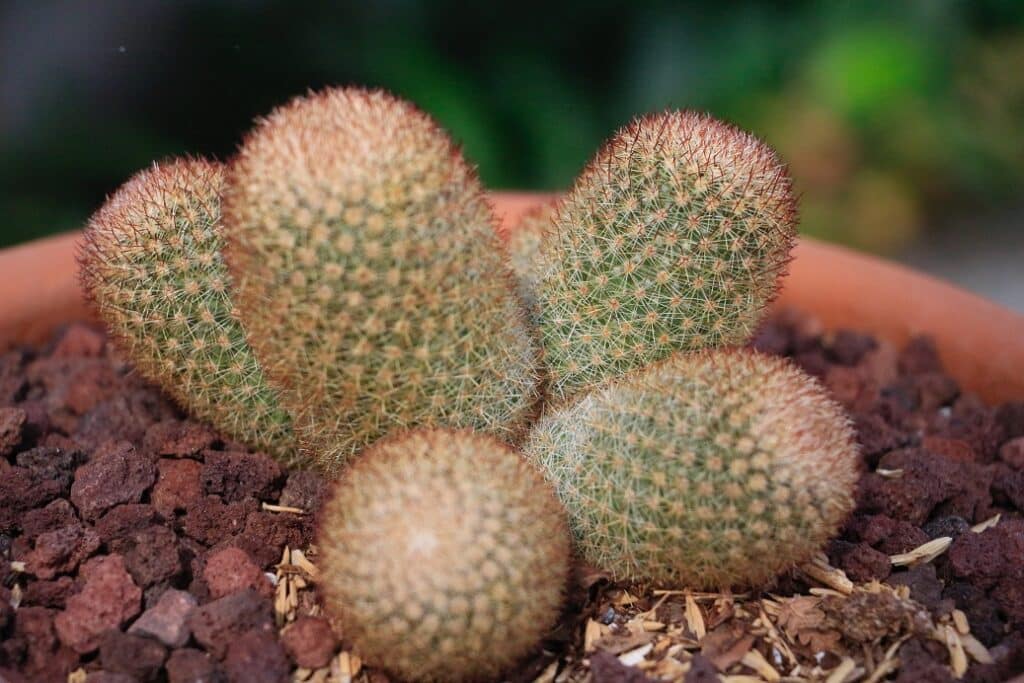
Providing Adequate Temperature Conditions
Protect the cactus from extreme cold temperatures by moving it indoors or providing insulation during colder months. Keep the cactus in a location with temperatures that are suitable for its specific species. Avoid exposing the cactus to sudden temperature changes, as this can stress the plant and lead to blackening.
Preventing Physical Damage or Injury
To prevent physical damage or injury, handle cacti with care and avoid mishandling or knocking them over. Keep the cactus in a safe location where it is less likely to be accidentally bumped or damaged. Taking preventative measures can minimize the risk of tissue damage and subsequent blackening.
Providing Proper Nutrition
Ensure the cactus receives proper nutrition by fertilizing it with a balanced fertilizer formulated for cacti. Follow the recommended dosage instructions and apply the fertilizer during the active growing season. Regularly monitor the cactus for signs of nutrient deficiencies and adjust the fertilization schedule as needed.
Implementing Pest Control Measures
If pests are infesting the cactus, implement appropriate pest control measures to eliminate the infestation. This can include applying insecticidal soap, introducing natural predators, or manually removing the pests. Regularly inspect the cactus for signs of recurring pest activity and take immediate action to prevent further damage.
Understanding and Accepting Natural Aging
It is important to understand and accept that the natural aging process of cacti involves the blackening and dying off of older parts. If the blackening is determined to be a result of natural aging, there may be no need for treatment or intervention. Focus on providing optimal care to promote the overall health and growth of the cactus.
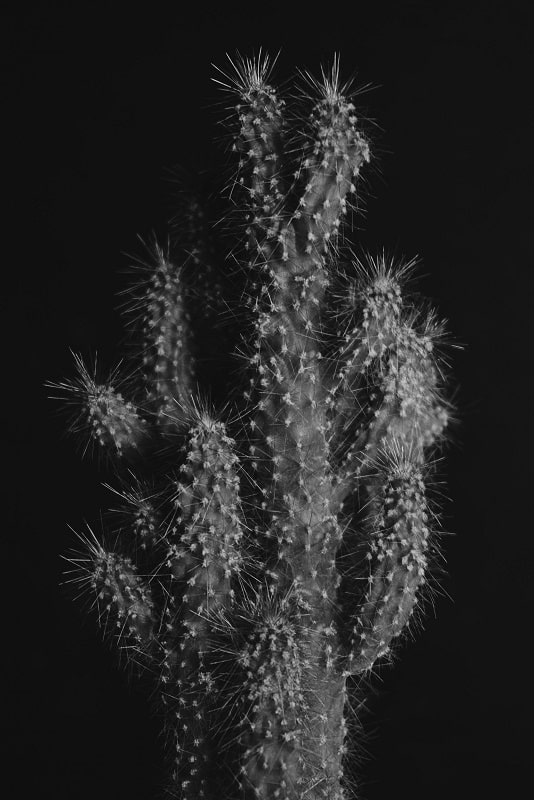
Conclusion
Have you find that why did my cactus turn black? it is important to identify the cause in order to take appropriate action. Overwatering, underwatering, root rot, fungal or bacterial infections, excessive sunlight, cold temperature stress, pest infestation, or natural aging can all contribute to blackening. By carefully observing the visual signs, checking soil moisture levels, and evaluating other factors, you can pinpoint the cause of the blackening.
Once the cause is identified, proper prevention and treatment measures can be implemented to restore the health and vitality of your cactus. Remember to maintain proper watering techniques, provide adequate protection from environmental factors, and regularly monitor and care for your cactus. With the right care, your cactus can thrive and remain a beautiful addition to your home or garden.

